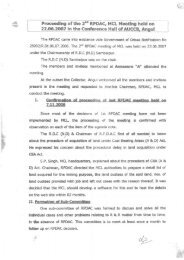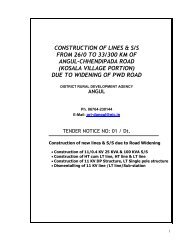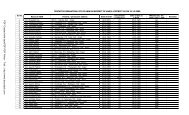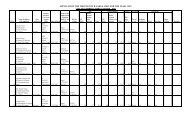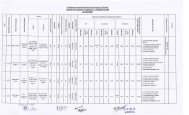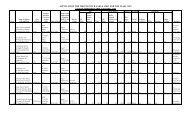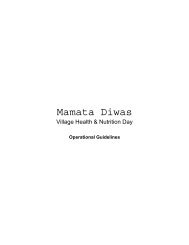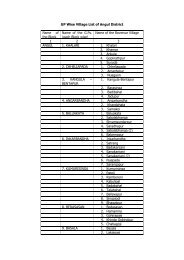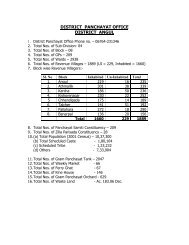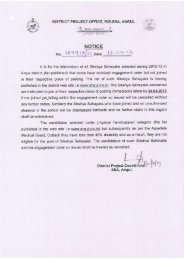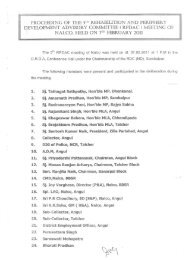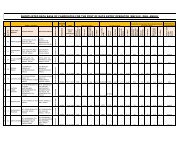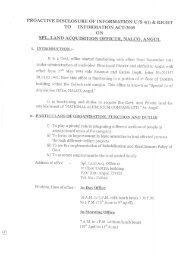7. revised annual plan 2009-2010 - Angul
7. revised annual plan 2009-2010 - Angul
7. revised annual plan 2009-2010 - Angul
Create successful ePaper yourself
Turn your PDF publications into a flip-book with our unique Google optimized e-Paper software.
AGRICULTURE & ALLIED ACTIVITIES<br />
Introduction:<br />
Agriculture is the backbone of rural economy. In <strong>Angul</strong> district, the gross cropped area is<br />
3,37,000 ha with cropping intensity of 175 percent. The topography of the district is both<br />
flat and undulating. The important soil groups of the district are alluvial, black, redlaterite<br />
and lateritic .The soils are mostly acidic in reaction. The available nitrogen in the<br />
soils is low while availability of phosphorus and potassium is in medium range.<br />
Out of the total 1,35,468 operational holdings nearly 86 percent belongs to marginal and<br />
small farmers while remaining 14 percent belongs to medium and large farmers. On the<br />
other hand, marginal and small farmers are in possession of 58 percent land as<br />
operational holdings while the medium and large farmers have 42 percent land. Total<br />
workforce in the district accounts for 39.79 percent of the total population. Cultivators<br />
and agricultural labourers together accounts for 58.34 percent of the total work force in<br />
the district who are directly depend on agriculture for their livelihoods.<br />
The average rainfall in the district is about 1400 mm, but due to want of adequate water<br />
harvesting structures and irrigation a large part of the area practices rainfed agriculture.<br />
The agro-climatic conditions in Blocks like Athmallik, Kishorenagar, and Chhendipada<br />
are suitable for vegetable cultivation, fruit crops, and floriculture; and thanks to the<br />
entrepreneurship of the local people the district is a leading producer and supplier of<br />
some vegetables and fruits.<br />
Details of the developments in the agriculture and allied sectors in this district have been<br />
briefly discussed in the Comprehensive District Agriculture Plan(CDAP) as follows in a<br />
concise version.<br />
Agriculture<br />
Agriculture is a lead sector in the district which provides livelihoods to nearly two-thirds<br />
of total workforce in the district. There is inter- Block disparity in agriculture<br />
development in the district mainly due to climatic variation, extent of irrigation and<br />
poverty. It is imperative to focus on better management of soil, water and other natural<br />
resources, enhance application of inputs and crop management through transfer of<br />
technology, risk management, commercialization of agriculture, creation of irrigation<br />
facilities, crop diversification, integrated farming, farm mechanization, post-harvest<br />
management, sustainable crop production practices like integrated nutrient, pest and<br />
water management, and development of rain-fed agriculture through watershed<br />
development approach.<br />
It is understood by the TSI that the district office(s) of the Agriculture Department feels<br />
that at present it lacks adequate human- and financial resources to collect required field-<br />
PRIA is an International Centre for learning and promotion of participation and democratic governance<br />
PDF Created with deskPDF PDF Writer - Trial :: http://www.docudesk.com<br />
31



